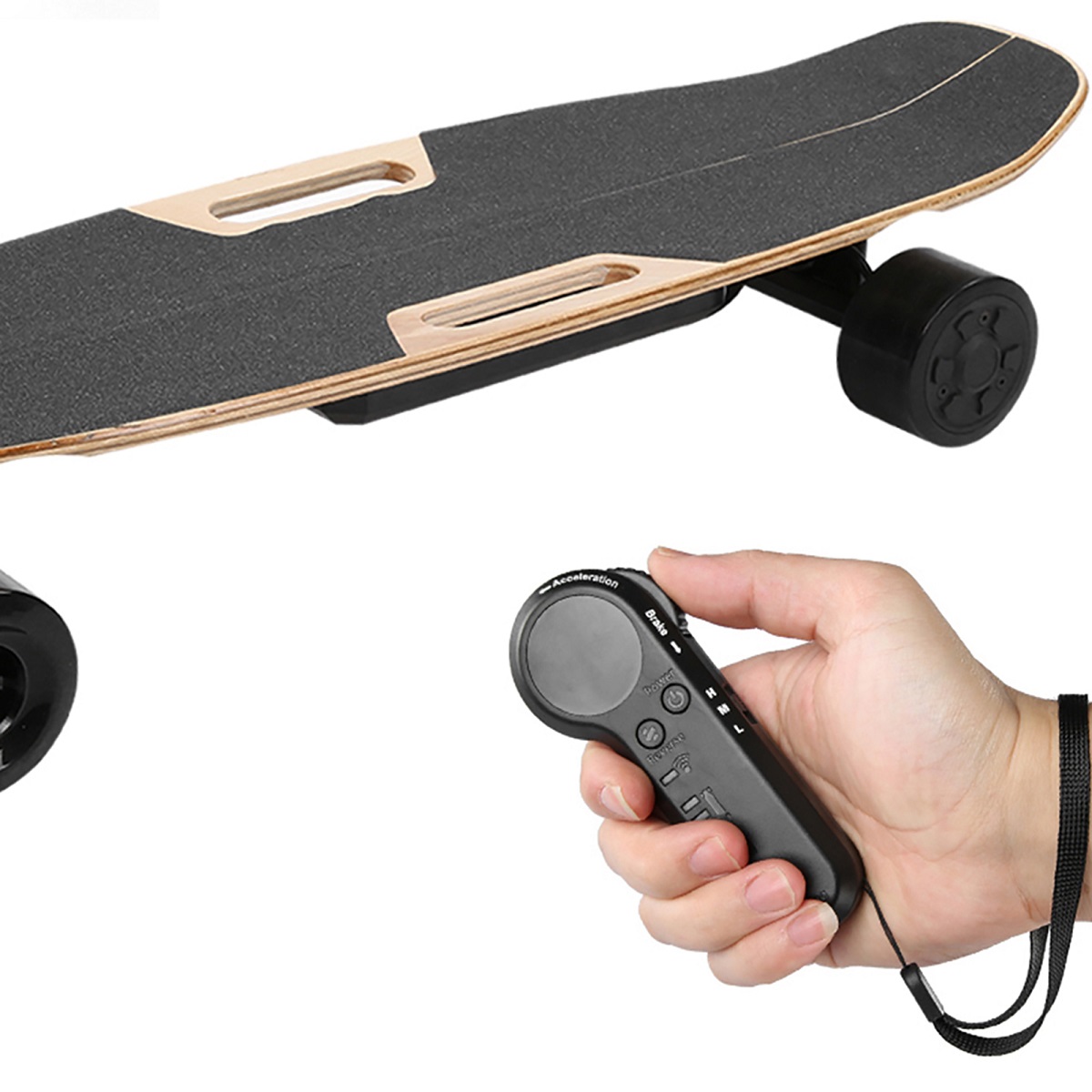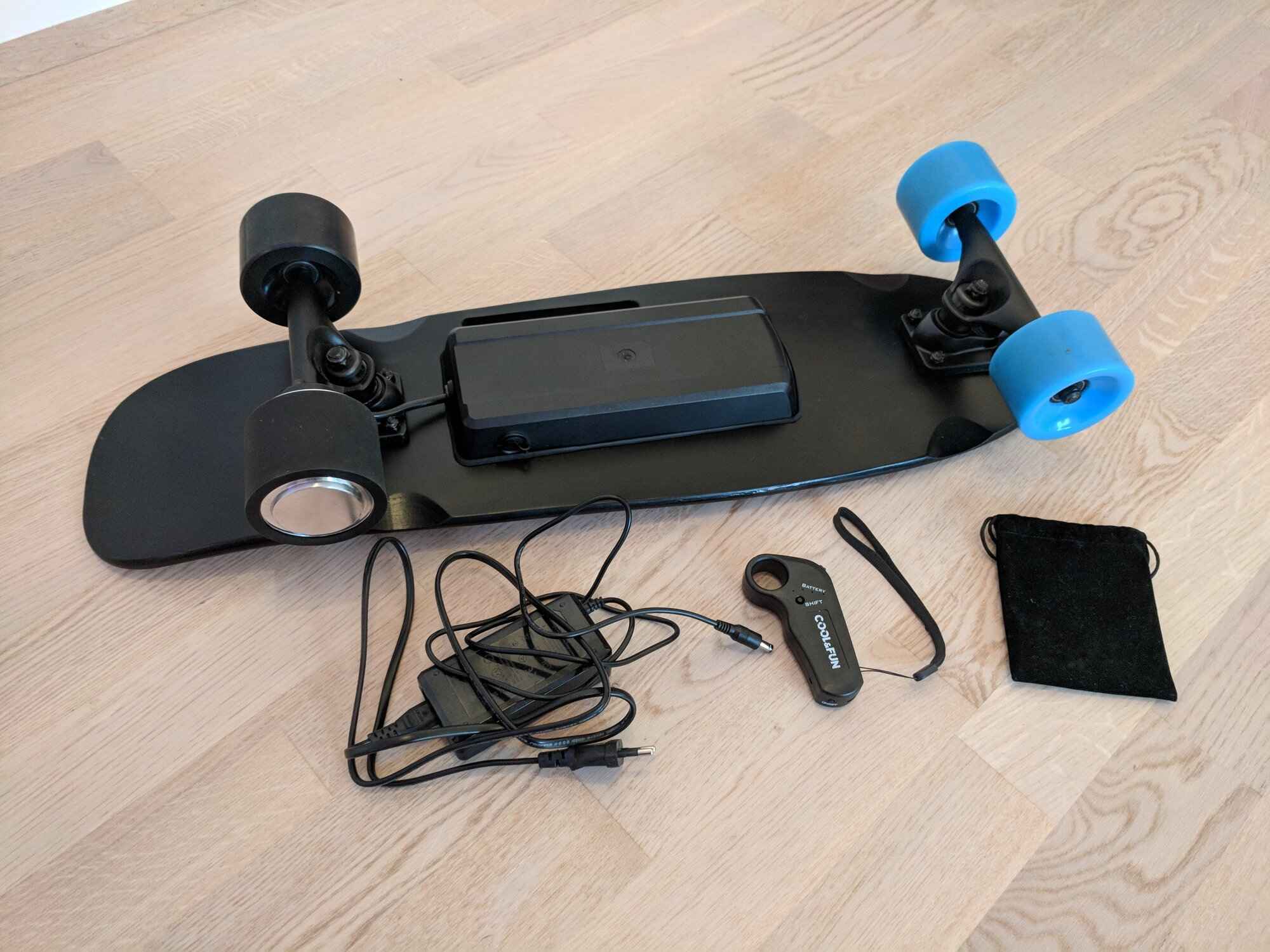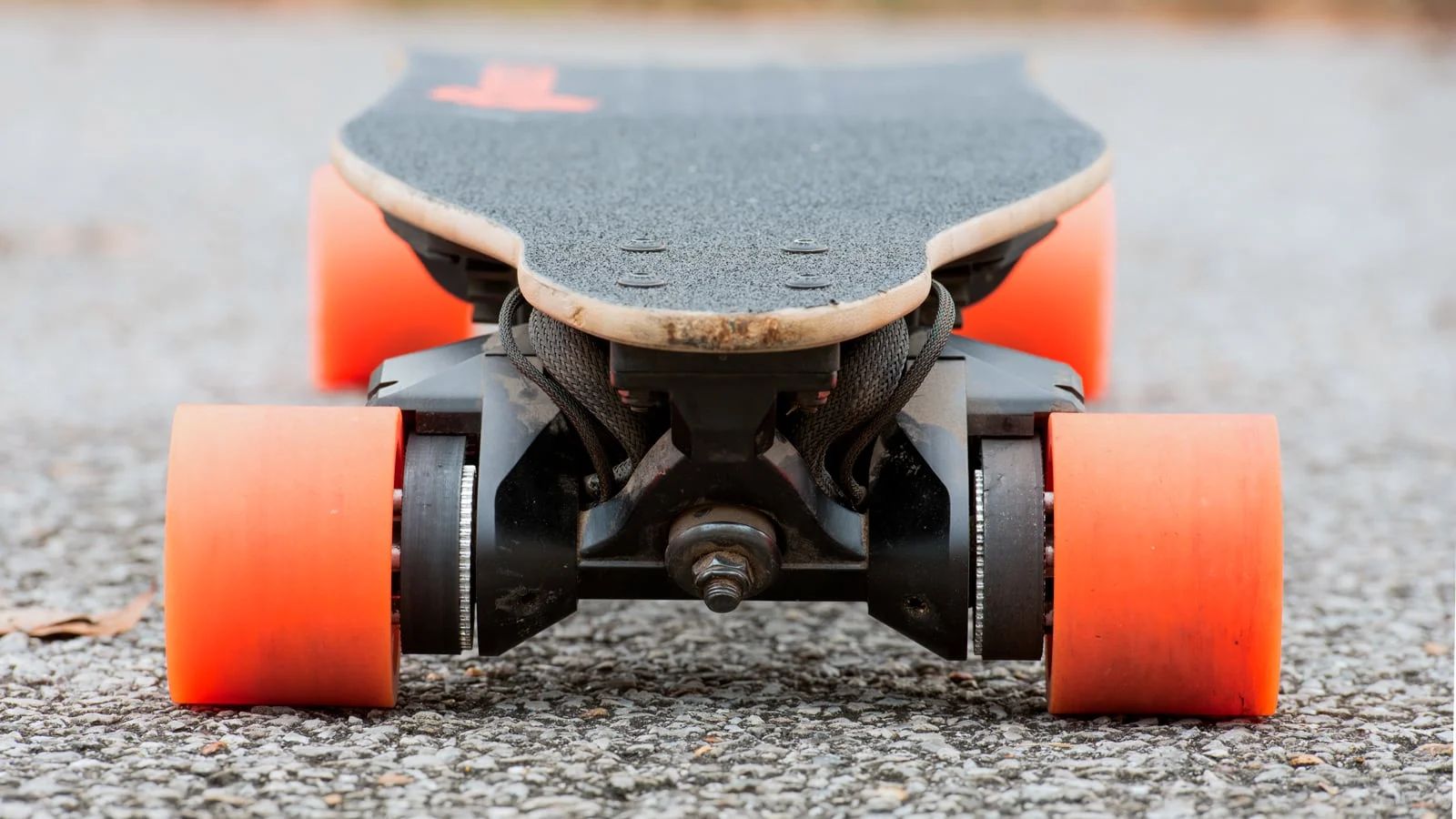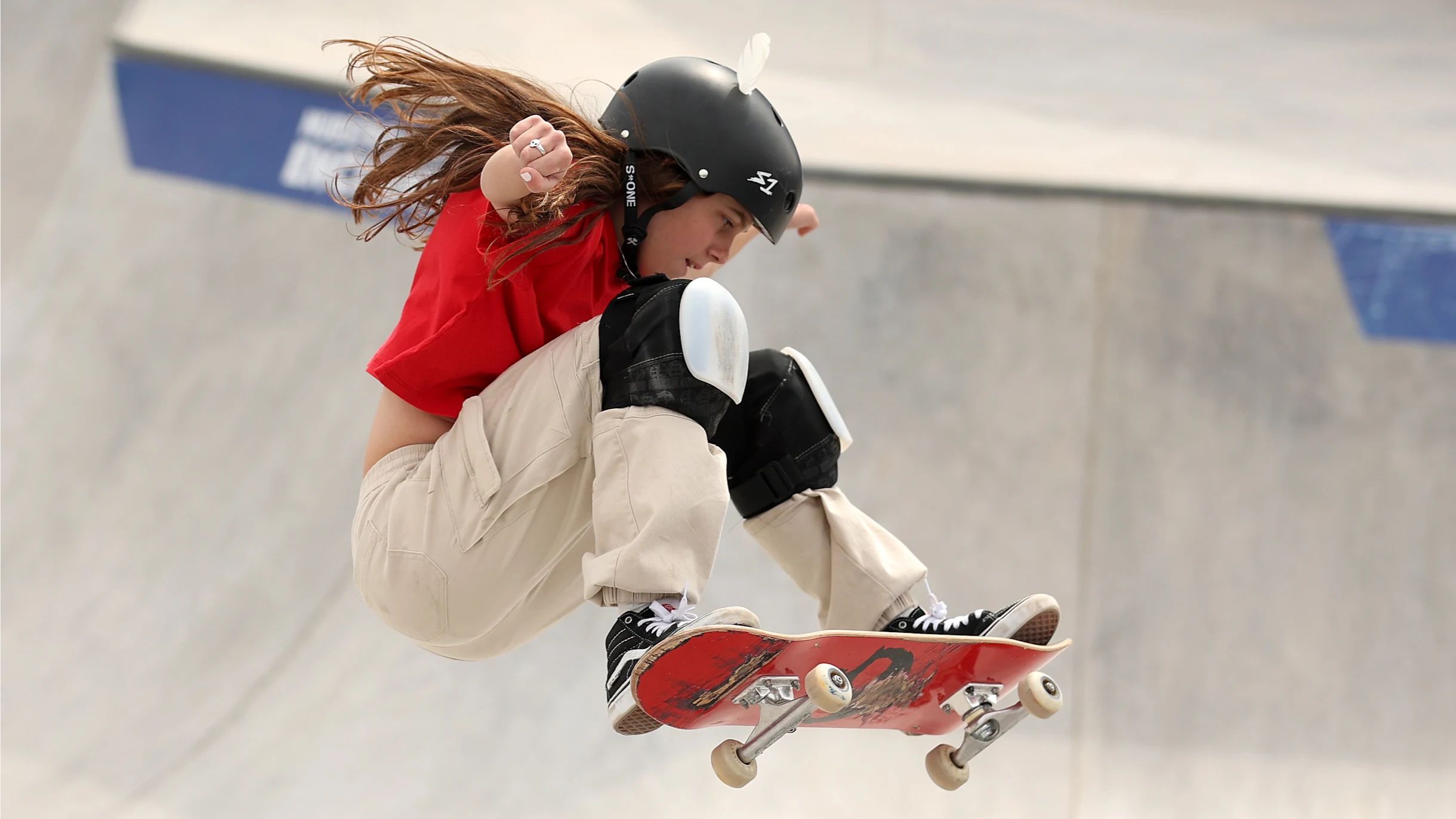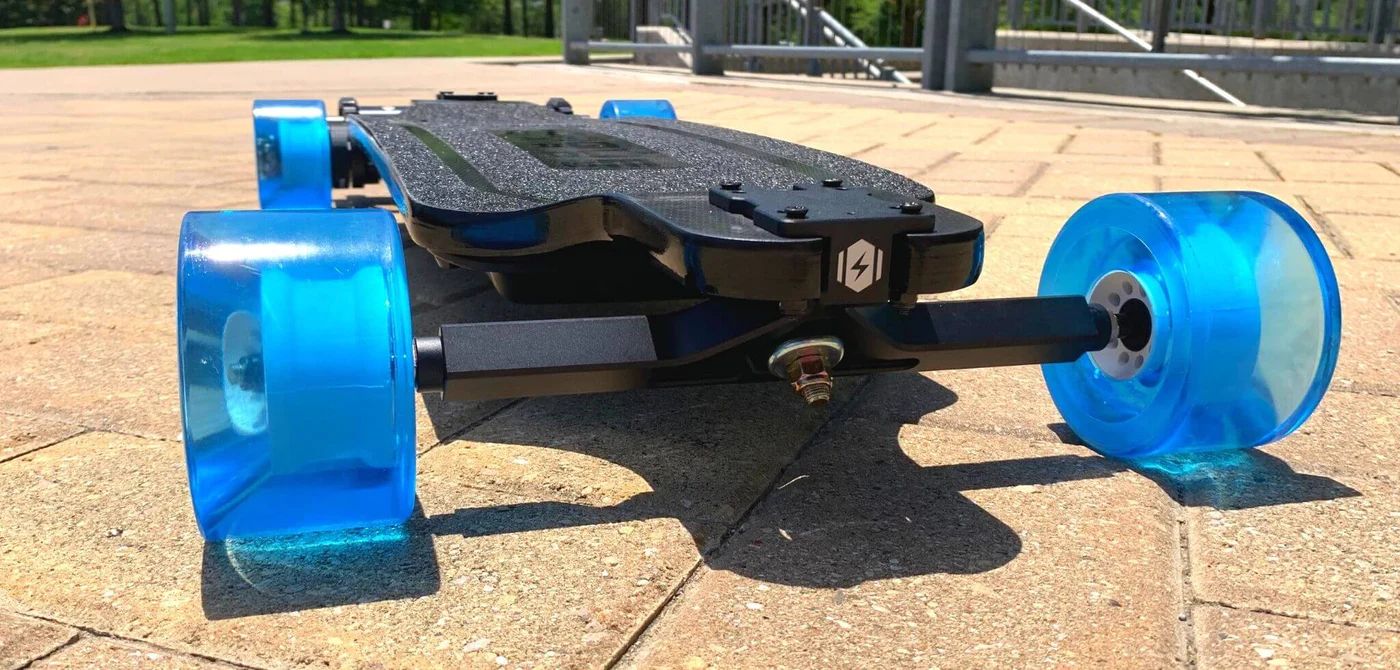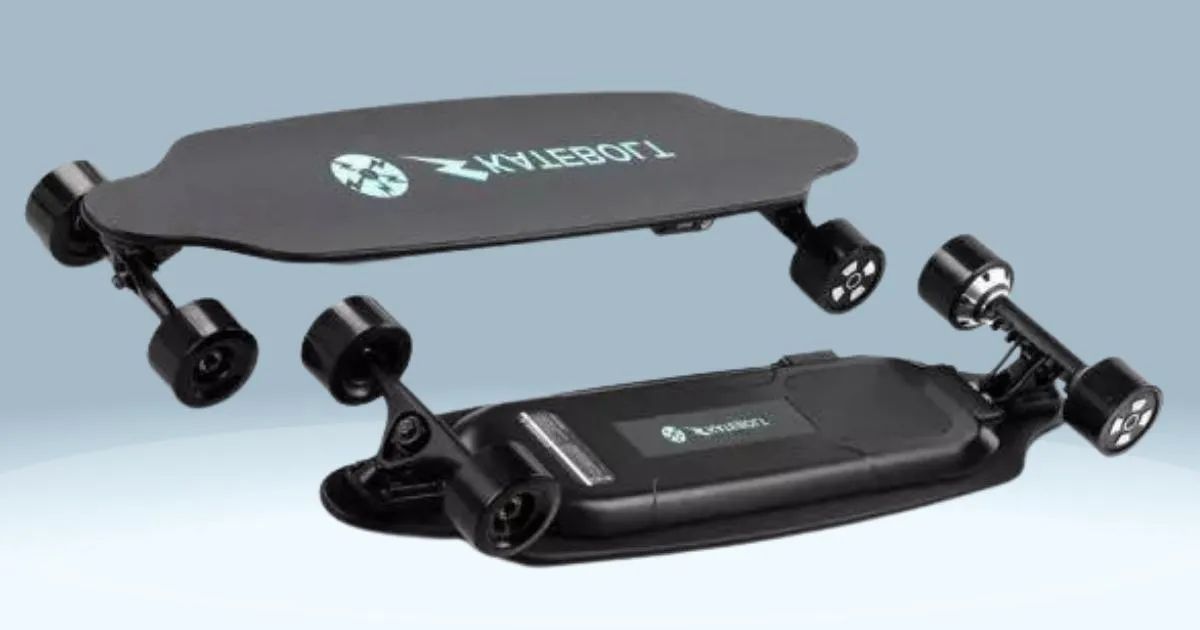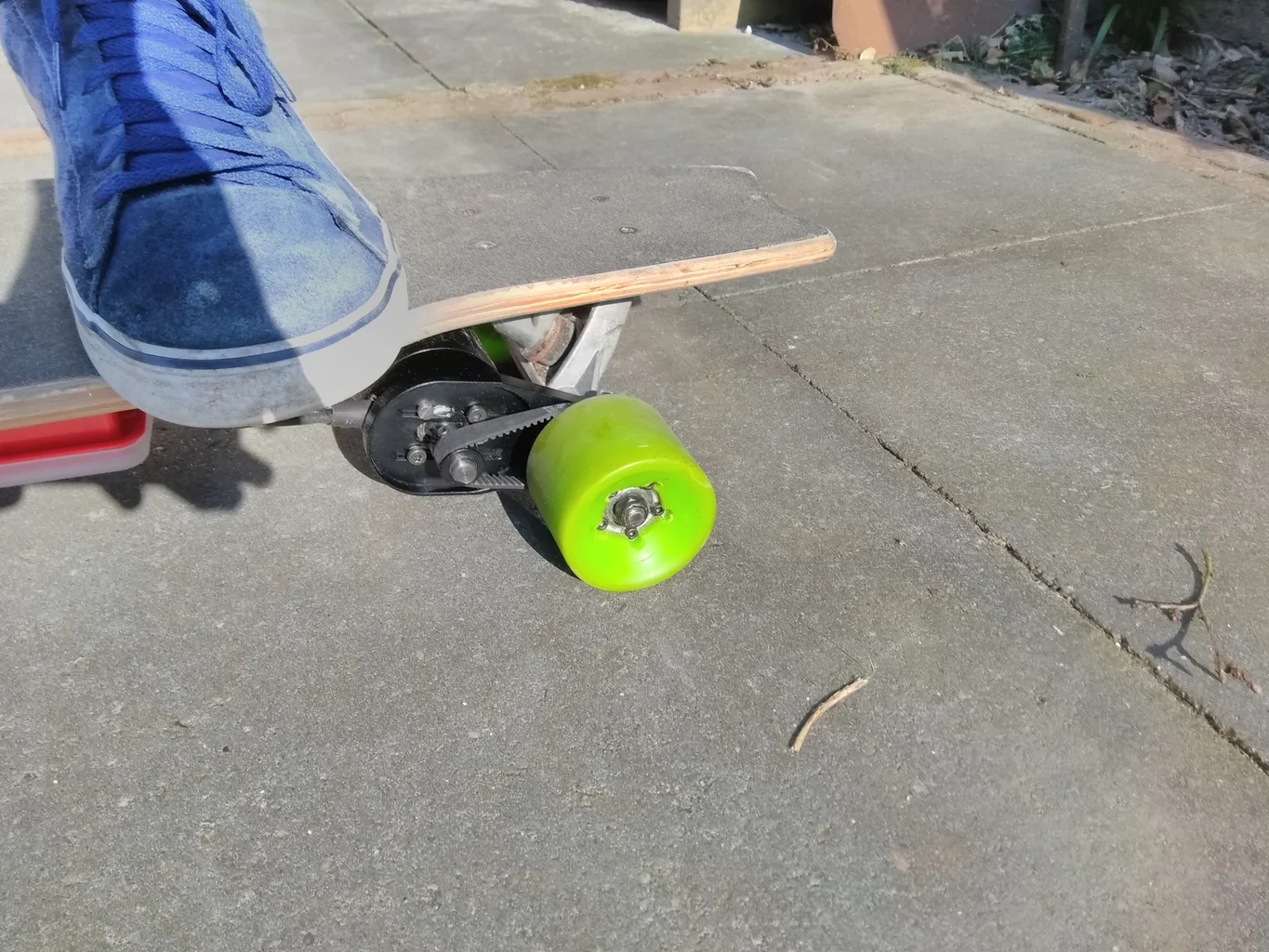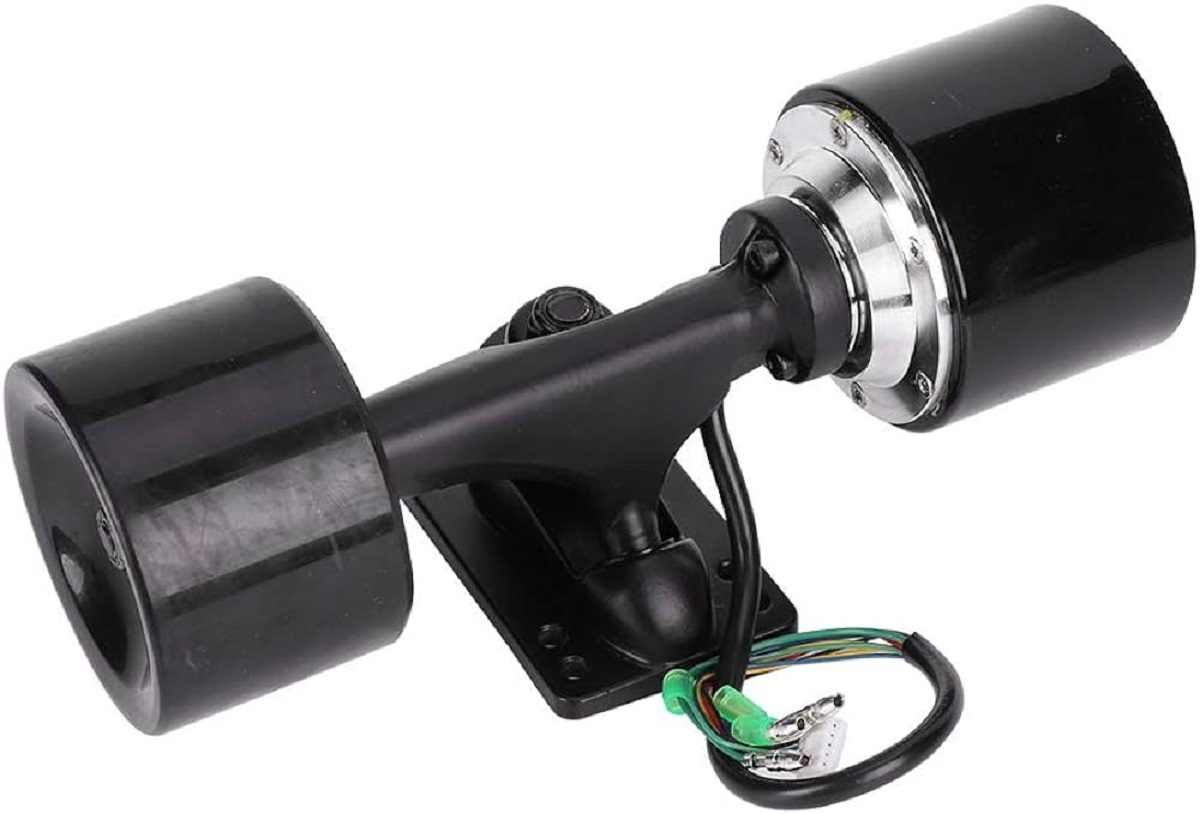Introduction
Welcome to the exciting world of electric skateboards! These innovative devices have gained popularity among commuters, thrill-seekers, and eco-conscious individuals alike. The ability to effortlessly glide through streets and parks, powered by an electric motor, has revolutionized the skateboarding experience.
One crucial component that determines the performance and reliability of an electric skateboard is the power supply. Choosing the right power supply ensures maximum efficiency, range, and overall enjoyment while riding. In this article, we will explore the different types of power supplies available for electric skateboards and delve into the factors to consider when selecting the appropriate one.
Whether you’re a beginner or an experienced rider, understanding the basics of battery technology, voltage, and capacity is essential. Additionally, familiarizing yourself with the different battery types, such as lithium-ion, lead acid, and nickel-metal hydride, will aid in making an informed decision about which power supply is best suited for your electric skateboard.
Battery pack configuration and the presence of a battery management system are also crucial aspects to consider. These factors can affect the performance, safety, and longevity of your skateboard’s power supply. Furthermore, understanding how to effectively charge the battery will enable you to maintain optimal performance and extend its lifespan.
Power output is another critical factor to examine when selecting a power supply for your electric skateboard. The motor power rating and the presence of a regenerative braking system can significantly impact the overall riding experience. Moreover, considering the weight and power efficiency of the power supply will help determine the skateboard’s range and performance in various terrains.
By diving into the intricacies of power supplies for electric skateboards, you’ll be equipped with the knowledge to make an informed decision when selecting the best power supply for your needs. So, let’s strap on our helmets, grip our remotes, and explore the world of electric skateboard power supplies!
Battery Technology for Electric Skateboards
The battery is a vital component of any electric skateboard, as it provides the necessary power to propel the rider forward. Understanding the different aspects of battery technology will help you make an informed decision when choosing the right power supply for your electric skateboard.
When it comes to electric skateboard batteries, two main factors to consider are voltage and capacity. Voltage refers to the electrical potential difference, while capacity represents the amount of energy the battery can store. Higher voltage and capacity generally result in increased power output and longer riding range.
One of the most popular battery types for electric skateboards is lithium-ion (Li-ion) batteries. These batteries offer a high energy density, allowing for a compact and lightweight design. Li-ion batteries also have a low self-discharge rate, meaning they can retain their charge when not in use for extended periods.
Lead acid batteries are another option commonly used in electric skateboards. Although they are heavier and bulkier compared to Li-ion batteries, they offer a more affordable option. Lead acid batteries also have a longer lifespan and can handle large current draws, making them suitable for high-powered electric skateboards.
Nickel-metal hydride (NiMH) batteries are also used in certain electric skateboard models. They fall somewhere in between Li-ion and lead acid batteries in terms of energy density and weight. NiMH batteries are known for their high durability and tolerance to harsh operating conditions.
When selecting a battery for your electric skateboard, it is essential to consider the configuration of the battery pack. Optimal battery pack configuration ensures a balance between performance, safety, and weight distribution. The most common battery pack configurations for electric skateboards include single stack, double stack, and multi-stack arrangements.
It’s worth noting that the presence of a battery management system (BMS) is crucial for ensuring the longevity and safety of the battery. A BMS monitors and regulates various aspects of the battery, such as voltage, temperature, and charging cycles. It helps prevent overcharging, undercharging, and excessive discharge, ensuring optimal battery performance and prolonging its lifespan.
Understanding the battery technology for electric skateboards will enable you to choose the right power supply that meets your specific requirements. Next, we will delve deeper into the charging process and explore the various power output considerations for electric skateboards.
Voltage and Capacity
When it comes to selecting the right power supply for your electric skateboard, two critical factors to consider are voltage and capacity.
Voltage refers to the electrical potential difference, which determines the power output of the battery. In electric skateboards, higher voltage batteries generally provide more power and acceleration. However, it is essential to ensure that your skateboard’s motor and electronics are compatible with the chosen voltage. Most electric skateboards operate on voltages ranging from 36V to 48V, although some high-performance models may use even higher voltages.
Capacity, on the other hand, refers to the amount of energy stored in the battery and directly impacts the range of your electric skateboard. A higher capacity battery will provide longer rides, allowing you to cover more distance without recharging. It is crucial to consider your riding needs and the expected range you desire before selecting the battery capacity. Electric skateboard batteries typically range from capacities as low as 1000mAh up to several thousand milliampere-hours (mAh) depending on the model and power requirements.
It’s important to strike the right balance between voltage and capacity when choosing a power supply for your electric skateboard. Higher voltage batteries offer more power, but if the capacity is insufficient, it may result in shorter overall ride time. Conversely, larger capacity batteries with lower voltage may offer longer range but may lack the desired acceleration and speed.
It’s also important to note that higher voltage batteries may require additional safety precautions and specialized charging equipment. So, it’s crucial to consider your skill level, experience, and any specific requirements before opting for a higher voltage battery.
Ultimately, the ideal voltage and capacity combination for your electric skateboard will depend on your specific riding style, terrain, and distance requirements. If you’re a casual rider who mainly uses your skateboard for short commutes and recreational purposes, a lower voltage battery with moderate capacity may suffice. However, if you’re an avid rider who enjoys long rides or requires more power for uphill climbs, a higher voltage and capacity battery would be more suitable.
By understanding the relationship between voltage and capacity, you can select the optimal power supply that meets your needs and provides an enjoyable electric skateboarding experience.
Lithium-ion Batteries
Lithium-ion (Li-ion) batteries are the most commonly used power supply for electric skateboards. They are known for their high energy density, lightweight design, and prolonged lifespan compared to other battery types.
One of the key advantages of Li-ion batteries is their high energy density, which refers to the amount of energy they can store in a compact size. This means that electric skateboards powered by Li-ion batteries can have a smaller and lighter battery pack, allowing for more maneuverability and agility while riding.
Li-ion batteries also have a low self-discharge rate, meaning they can retain their charge when not in use for extended periods. This eliminates the need for frequent recharging and ensures that your electric skateboard is always ready for your next adventure.
In addition to their energy efficiency, Li-ion batteries offer a longer overall lifespan compared to other battery chemistries. With careful use, proper charging techniques, and regular maintenance, Li-ion batteries for electric skateboards can last for several years before requiring replacement.
Another significant advantage of Li-ion batteries is their fast charging capability. Most Li-ion batteries can be charged to full capacity in just a few hours, providing minimal downtime between rides. This makes them highly convenient for riders who are always on the go.
However, it’s important to note that Li-ion batteries require proper care and handling to ensure their safety and longevity. Overcharging, extreme temperatures, and physical damage can compromise the integrity of the battery and even pose a safety risk. Therefore, it is crucial to follow the manufacturer’s guidelines for charging, storage, and maintenance to maximize the lifespan and performance of your Li-ion battery.
When selecting a Li-ion battery for your electric skateboard, consider factors such as voltage, capacity, and brand reputation. Higher voltage batteries provide more power, while larger capacity batteries offer longer range. Additionally, choosing reputable brands known for their quality and reliability will ensure you get a battery that performs optimally and is built to last.
Overall, Li-ion batteries are an excellent choice for electric skateboards due to their high energy density, lightweight design, and long lifespan. With proper care and maintenance, a Li-ion battery can provide reliable and efficient power for your electric skateboard, enhancing your riding experience.
Lead Acid Batteries
Lead acid batteries are an alternative power supply option for electric skateboards. While less common than lithium-ion batteries, they offer certain advantages and are often used in budget-friendly electric skateboards or DIY skateboard projects.
One of the notable advantages of lead acid batteries is their affordability. Compared to other battery types, lead acid batteries are generally more cost-effective, making them an appealing choice for riders on a tight budget.
Lead acid batteries also have a longer overall lifespan compared to many other battery types. With proper care and maintenance, lead acid batteries can provide reliable performance for several years, making them a durable option for electric skateboards.
Another benefit of lead acid batteries is their ability to handle large current draws. This means that lead acid batteries can deliver a substantial amount of power to the motor, resulting in good acceleration and speed. They are particularly suited for high-powered electric skateboards that require a significant amount of current.
However, lead acid batteries come with a few drawbacks as well. They tend to be bulkier and heavier compared to lithium-ion batteries, which can affect the overall weight and maneuverability of the electric skateboard. The increased weight may also limit the range and performance of the skateboard, as more power is required to move the heavier battery.
Lead acid batteries also have a higher self-discharge rate compared to lithium-ion batteries, meaning they may lose charge more quickly when not in use. This may require more frequent charging and monitoring to ensure that the battery is ready for your next ride.
Furthermore, it’s important to handle lead acid batteries with care. They contain corrosive chemicals and must be properly stored, charged, and handled to prevent leakage or damage. It is crucial to follow safety guidelines and the manufacturer’s instructions for charging and maintaining lead acid batteries to ensure their safe and optimal performance.
Overall, lead acid batteries offer a more affordable option for electric skateboards and provide reliable power for high-performance models. While they may be bulkier and heavier compared to lithium-ion batteries, lead acid batteries are still a viable choice, particularly for riders on a budget or those seeking higher power output.
Nickel-metal Hydride (NiMH) Batteries
Nickel-metal hydride (NiMH) batteries are another type of power supply option for electric skateboards. While not as commonly used as lithium-ion batteries, they offer certain advantages that make them a viable choice for some riders.
One of the significant advantages of NiMH batteries is their high durability and tolerance to harsh operating conditions. They can withstand extreme temperatures, vibrations, and shocks, making them suitable for electric skateboards used in rugged terrains or rough riding conditions.
NiMH batteries also have a longer overall lifespan compared to some other battery types. With proper care and maintenance, they can provide reliable power for an extended period, offering riders long-lasting performance and value.
Compared to lead acid batteries, NiMH batteries are lighter and more compact, making them a more space-efficient option for electric skateboards. The reduced weight and size contribute to improved maneuverability and agility while riding.
Another advantage of NiMH batteries is their ability to provide a consistent power output. They can deliver a steady current, resulting in smooth acceleration and reliable performance throughout the ride.
However, there are a few caveats to consider when opting for NiMH batteries. One of the primary drawbacks is their lower energy density compared to lithium-ion batteries. This means that for the same physical size, NiMH batteries may offer lower capacity and range. Riders who require long distances or extended ride times may find NiMH batteries less suitable.
Additionally, NiMH batteries have a slightly higher self-discharge rate than lithium-ion batteries. This means that they may lose charge more quickly, even when not in use. As a result, NiMH batteries may require more frequent charging or recharging before each ride to ensure sufficient power.
Overall, nickel-metal hydride (NiMH) batteries can be a reliable and durable power supply for electric skateboards. While they may have lower energy density compared to lithium-ion batteries, they provide stable power output, withstand harsh conditions, and offer a longer overall lifespan. NiMH batteries are a suitable choice for riders who prioritize durability and performance under demanding riding conditions.
Battery Pack Configuration
The battery pack configuration is an important aspect to consider when selecting a power supply for your electric skateboard. The way the battery cells are arranged in the pack can affect the overall performance, weight distribution, and safety of your skateboard.
There are several common battery pack configurations used in electric skateboards, including single stack, double stack, and multi-stack arrangements.
A single stack configuration involves placing the battery cells in a single row or layer. This configuration is typically used in electric skateboards with lower power requirements or those aiming for a more compact design. Single stack configurations are easier to manage and may be suitable for riders looking for a lightweight and agile electric skateboard.
Double stack configurations involve placing two rows or layers of battery cells, stacked on top of each other. This configuration allows for a higher voltage and capacity, resulting in increased power output and longer riding range. Electric skateboards with double stack battery pack configurations are ideal for riders who prioritize power and want to tackle challenging terrains.
Multi-stack configurations consist of more than two rows or layers of battery cells. These configurations can further increase the voltage and capacity of the battery pack, providing even greater power output and extended riding range. Multi-stack configurations are typically used in high-performance electric skateboards or for riders who require maximum power and endurance.
When considering the battery pack configuration, it is crucial to ensure proper weight distribution for optimal performance and stability. Placing the battery pack closer to the center of the skateboard can help achieve a balanced weight distribution, resulting in improved maneuverability and control.
Additionally, it’s essential to choose a battery pack configuration that is compatible with your electric skateboard’s frame and mounting system. The battery pack should fit securely and be well-protected to avoid any potential damage during rides.
Remember that safety is paramount when configuring the battery pack. Ensure that it is well-insulated, properly sealed, and protected from external elements. It is also advisable to follow the manufacturer’s guidelines and best practices when assembling and connecting the battery pack to your electric skateboard.
By considering the battery pack configuration, you can select the optimal setup that aligns with your desired power output, riding range, and weight distribution needs. This will ensure that your electric skateboard delivers the performance and ride experience you desire.
Battery Management System
A battery management system (BMS) is an essential component of the power supply for electric skateboards. It is responsible for monitoring and regulating various aspects of the battery, ensuring optimal performance, safety, and longevity.
One of the main functions of a BMS is to monitor the voltage of the battery cells. It ensures that the battery cells are operating within a safe voltage range, preventing overcharging or discharging, which can lead to damage to the cells or even pose a safety risk.
Additionally, a BMS monitors the temperature of the battery. High temperatures can accelerate the aging process of the battery cells and reduce their lifespan. The BMS activates safeguards, such as thermal management mechanisms or cutoffs, to prevent the battery from overheating, thus prolonging its life and ensuring safe operation.
A BMS also plays a vital role in balancing the voltage across individual battery cells in the pack. It helps ensure that each cell is charged and discharged equally to maintain optimal performance and prevent any cell from being overworked or underutilized.
In the context of charging, the BMS regulates the charging process to prevent overcharging, which can cause damage to the battery cells. It manages the charging current and voltage to maintain a safe and efficient charging cycle, extending the lifespan of the battery.
Furthermore, a BMS provides various safety features, such as overcurrent protection and short-circuit prevention. It monitors the current flow and detects abnormalities, immediately cutting off power to prevent damage to the battery or connected components.
A BMS also helps with diagnostics and monitoring the overall health of the battery. It can provide information about the battery’s capacity, cycle count, and potential issues. This allows users to keep track of the battery’s performance and take necessary actions, such as replacing or servicing the battery when needed.
When selecting a power supply for your electric skateboard, it is crucial to choose a battery that includes a reliable and robust battery management system. An effective BMS improves the safety, lifespan, and performance of your electric skateboard’s power supply, ensuring a smooth and enjoyable riding experience.
Charging the Battery
Properly charging the battery is essential to ensure optimal performance, longevity, and safety of your electric skateboard’s power supply. Understanding the charging process and following best practices will help you maintain the battery’s health and maximize your riding experience.
First and foremost, it is crucial to use the charger specifically designed for your electric skateboard’s battery. Using an incompatible charger can lead to overcharging or undercharging, potentially damaging the battery cells or reducing their capacity.
Before connecting the charger, make sure the charging port on your electric skateboard is clean, free of debris, and in good condition. A dirty or damaged charging port can affect the charging process and potentially result in poor connection or overheating.
When connecting the charger, ensure that it is securely plugged into both the electric skateboard and a reliable power source. Loose connections can lead to interrupted charging or inefficient power transfer.
Frequent and partial charging is generally recommended to maintain the battery’s health and prolong its lifespan. Completely draining the battery before each charge can put unnecessary strain on the cells and lead to premature degradation. Charging the battery after each use, even for short periods, helps keep the cells within their optimal voltage range.
It is important to avoid leaving the battery connected to the charger for an extended period after it reaches full charge. Overcharging can cause heat buildup and result in reduced battery capacity or even damage to the cells. Most modern chargers come with an automatic cutoff feature that stops charging once the battery is fully charged, providing an added layer of safety.
Proper temperature management during the charging process is essential. High temperatures can reduce the battery’s capacity and overall lifespan. Avoid charging the battery in excessively hot environments and never expose it to direct sunlight or extreme heat sources.
Lastly, it is important to store the battery in a cool and dry place when not in use. If you plan to store the battery for an extended period, make sure it is partially charged, ideally around 50%. This helps prevent excessive self-discharge or over-discharge during storage, ensuring that the battery remains in good condition.
Following these charging best practices will help maintain the health and performance of your electric skateboard’s battery. It’s important to refer to the manufacturer’s guidelines and recommendations specific to your battery model to ensure proper charging procedures and maximize the lifespan of your power supply.
Power Output for Electric Skateboards
The power output of an electric skateboard plays a crucial role in determining its performance, speed, and overall riding experience. Understanding the factors that contribute to power output will help you choose the right power supply for your specific needs.
One of the main components that determine the power output is the motor power rating. The motor power rating is typically measured in watts (W) and indicates how much power the motor can generate. A higher motor power rating generally translates to faster acceleration and higher top speeds. It’s important to consider your riding style and terrain requirements when selecting a motor power rating, as too powerful a motor may be unnecessary or even detrimental for casual riders.
In addition to the motor power rating, another consideration is the presence of a regenerative braking system. A regenerative braking system allows the electric skateboard to recover and convert some of the energy generated during braking into usable power, which is then stored back into the battery. This not only increases the overall efficiency of the skateboard but can also extend the range by reusing the energy that would otherwise be dissipated as heat.
It’s worth noting that the power output of an electric skateboard can escalate based on various factors, including the battery voltage, capacity, and motor efficiency. Higher voltage batteries can provide more power to the motor, resulting in increased speed and acceleration. Similarly, larger capacity batteries can deliver sustained power output for longer rides. Additionally, motors with greater efficiency can convert a higher percentage of electrical energy into mechanical power, maximizing the power output of the electric skateboard.
Weight and power efficiency are also critical factors to consider when evaluating the power output. Heavier electric skateboards may require more power to overcome the weight, resulting in reduced overall efficiency and range. On the other hand, a power-efficient skateboard can utilize the available power more effectively, providing better performance and longer rides.
It’s important to find the right balance between power output and energy consumption that suits your riding style, terrain, and distance requirements. Riders seeking high speeds and exhilarating experiences may benefit from a higher power output, while those looking for leisurely rides may prefer a more modest power output.
To ensure optimal power output and efficiency, follow the manufacturer’s guidelines for selecting the appropriate power supply and consider any recommendations for motor power, battery compatibility, and overall system capability. This will help you find the ideal power output for your electric skateboard and enhance your riding experience.
Motor Power Rating
The motor power rating is a crucial factor in determining the performance and capabilities of an electric skateboard. The motor power rating refers to the amount of power that the motor can generate and is typically measured in watts (W). Understanding the motor power rating will help you select the right power supply for your electric skateboard based on your riding style, terrain, and desired speed.
A higher motor power rating generally translates to faster acceleration and higher top speeds. Electric skateboards with high power motors can provide a thrilling and exhilarating ride, making them suitable for riders who crave speed and acceleration.
When it comes to motor power, it’s essential to strike a balance between your riding preferences and the terrain you’ll be riding on. If you mainly ride on flat surfaces or gentle inclines, a motor with a lower power rating may suffice. However, if you plan to conquer steep hills or challenging terrains, a higher power motor will be necessary to ensure sufficient climbing power and performance.
It’s important to consider that more powerful motors tend to draw more current from the battery, which can impact the overall range of your electric skateboard. If long-distance rides are a priority, it may be worth considering a motor with a slightly lower power rating to optimize battery efficiency and maximize range.
Keep in mind that the motor power rating alone does not determine the overall performance of an electric skateboard. Other factors such as battery voltage, capacity, and motor efficiency also play a significant role in determining the overall power output and ride experience. It’s important to consider the entire system, including the battery pack and motor, to achieve the optimal power output for your needs.
When selecting an electric skateboard with a specific motor power rating, be sure to consult the manufacturer’s specifications and guidelines. This will ensure that the motor power rating is compatible with the other components of the electric skateboard and that the system operates optimally and safely.
Ultimately, finding the right motor power rating for your electric skateboard requires considering your riding requirements and preferences. Whether you prefer a thrilling ride with fast speeds or a more relaxed cruising experience, selecting the appropriate motor power rating is key to enjoying your electric skateboard to the fullest.
Escalating Power Output
As technology advances, there is a constant drive to push the boundaries of power output in electric skateboards. Escalating power output refers to the continuous efforts to increase the amount of power that electric skateboards can generate, resulting in improved speed, acceleration, and overall performance.
One of the primary factors contributing to escalating power output is the advancement in battery technology. The development of high-capacity and high-voltage battery packs enables electric skateboards to deliver more power to the motor, resulting in greater speed and acceleration. Lithium-ion batteries, in particular, have played a significant role in pushing the limits of power output in electric skateboards due to their high energy density and lightweight design.
In addition to battery advancements, motor technology has also progressed, allowing for more powerful and efficient motors. High-performance motors with higher torque and better heat dissipation capabilities can convert electrical energy into mechanical power more effectively, resulting in improved power output and overall performance.
Furthermore, the incorporation of regenerative braking systems has contributed to the escalating power output of electric skateboards. Regenerative braking allows the skateboard to recover and convert some of the energy generated during braking, which then gets stored back into the battery. By maximizing the use of energy, regenerative braking systems enhance overall power efficiency and extend the range of the electric skateboard.
The increasing popularity of electric skateboarding has also led to a greater demand for high-powered models. Manufacturers are responding to this demand by developing electric skateboards with higher power output capabilities to cater to the needs of riders seeking faster speeds, steeper climbs, and more exhilarating experiences.
However, it’s important to note that escalating power output comes with certain considerations. Higher power output generally requires more robust components and a sturdier construction to handle the increased forces and stresses. This can result in heavier skateboard designs, which may affect maneuverability and portability.
Moreover, escalating power output can also impact battery life and overall range. More powerful electric skateboards typically draw more current, which can lead to faster battery drain and potentially limit the distance it can cover on a single charge. Therefore, it’s essential to strike a balance between power output and battery efficiency to ensure a satisfactory riding experience.
As power output continues to escalate, it is crucial for manufacturers and riders to prioritize safety. Riders should wear appropriate protective gear and ride within their skill levels to ensure safe operation. Additionally, manufacturers must provide clear guidelines, warnings, and properly engineered components to support the increased power output and maintain rider safety.
Overall, the escalating power output in electric skateboards is driven by advancements in battery technology, motor efficiency, and the demand for higher performance. By carefully balancing power output with other factors such as battery life, weight, and safety, riders can enjoy an exciting and exhilarating electric skateboarding experience.
Regenerative Braking System
The regenerative braking system is a key feature in many electric skateboards that allows the skateboard to recover and convert some of the energy generated during braking into usable power. This innovative technology not only enhances the overall efficiency of the skateboard but also extends the riding range by reusing energy that would otherwise be dissipated as heat during braking.
When a rider applies the brakes on an electric skateboard with a regenerative braking system, the motor switches into a generator mode. As the wheels slow down, the rotation of the wheels drives the motor to generate electrical energy, which is transferred back to the battery for storage and later use.
One of the primary advantages of regenerative braking is that it reduces the reliance on traditional friction-based braking methods, such as mechanical brakes. Friction-based brakes can wear down over time and require regular maintenance. In contrast, regenerative braking allows riders to slow down and come to a stop using the motor-generated resistance, minimizing the need for mechanical braking and extending the lifespan of brake components.
Besides providing energy-saving benefits, regenerative braking also offers a smoother and more controlled braking experience. By leveraging the motor’s resistance, riders can modulate their speed more precisely and have better control over deceleration. This can be particularly useful when navigating downhill slopes or crowded areas where smooth and precise braking is essential for safety.
Another advantage of regenerative braking is that it contributes to a longer riding range. By capturing and converting energy that would otherwise be lost as heat during braking, regenerative braking maximizes the overall efficiency of the electric skateboard. This means that riders can enjoy extended rides without needing to recharge the battery as frequently, enhancing the overall convenience and usability of the skateboard.
While regenerative braking is beneficial, it is important to be aware of its limitations. The amount of energy that can be recovered through regenerative braking is not 100% efficient, as there will always be some energy loss during the conversion process. Additionally, regenerative braking might not be as effective at very low speeds, as it relies on the motor’s resistance to generate electricity.
It’s also worth noting that the regenerative braking system should not replace other braking mechanisms entirely. Mechanical brakes or other braking methods should still be in place for emergency stops or situations where greater deceleration power is needed.
Overall, the regenerative braking system is a remarkable feature that enhances the efficiency and usability of electric skateboards. By recovering and repurposing energy during braking, riders can enjoy smoother deceleration, extend their riding range, and reduce reliance on traditional friction-based brakes. With advancements in technology, regenerative braking continues to evolve, further enhancing the overall performance and sustainability of electric skateboards.
Weight and Power Efficiency
The weight and power efficiency of an electric skateboard are crucial factors that impact the overall performance, range, and usability of the skateboard. Understanding the relationship between weight and power efficiency is key to selecting the right power supply and optimizing the riding experience.
When it comes to weight, lighter electric skateboards generally offer better maneuverability, agility, and portability. Reduced weight means less energy is required to propel the skateboard forward, resulting in increased power efficiency and range. Lighter electric skateboards can also be easier to carry or transport when not in use.
On the other hand, the weight of the power supply, particularly the battery, significantly contributes to the overall weight of the electric skateboard. Heavier batteries might provide more power output but can impact the overall maneuverability and portability of the skateboard. It’s important to strike a balance between power output and weight, considering factors such as riding style, terrain, and distance requirements.
Power efficiency is another critical aspect to consider in relation to the weight of the electric skateboard. A power-efficient skateboard utilizes electrical energy more effectively, resulting in longer rides and extended battery life. Efficiency can be influenced by various factors, including the motor’s efficiency, battery technology, and overall design of the electrical system.
Advancements in motor technology have led to the development of more efficient motors that can convert a higher percentage of electrical energy into mechanical power. Efficient motors draw less current from the battery, leading to reduced energy consumption and increased overall power efficiency.
Battery technology plays a significant role in power efficiency as well. Lithium-ion batteries, for example, have higher energy density and offer better power efficiency compared to other battery types. Choosing the right battery with the appropriate voltage and capacity for your riding needs is essential to optimize power efficiency and maximize the riding range.
The overall design and components of the electrical system can also impact power efficiency. Proper wiring, connectors, and electronics that minimize power loss and maximize energy transfer contribute to improved power efficiency. Intelligently designed electrical systems can ensure that the power supply is distributed efficiently to the motor and other components, minimizing wastage and heat generation.
It’s important to consider the weight and power efficiency of an electric skateboard based on your specific needs and preferences. If you prioritize portability, maneuverability, and longer rides, opting for a lighter skateboard with power-efficient components, such as a lightweight battery and an efficient motor, would be beneficial.
By finding the right balance between weight and power efficiency, riders can optimize the performance and range of their electric skateboards, ensuring an enjoyable and efficient riding experience.
Conclusion
Choosing the right power supply for your electric skateboard is crucial for achieving optimal performance, range, and overall riding experience. Understanding battery technology, voltage, capacity, and the impact of factors such as weight and power efficiency is key to making an informed decision.
Battery technology, including lithium-ion, lead acid, and nickel-metal hydride batteries, offers different advantages and considerations. Lithium-ion batteries are popular for their high energy density, lightweight design, and long lifespan. Lead acid batteries provide a more affordable option with a longer overall lifespan and the ability to handle large current draws. Nickel-metal hydride batteries offer high durability and tolerance to harsh operating conditions.
Voltage and capacity are critical factors when selecting a power supply. Higher voltage batteries generally provide more power output, while larger capacity batteries offer longer riding range. Striking the right balance based on your riding needs and terrain requirements is essential.
The battery pack configuration and the presence of a battery management system are crucial for optimal performance and safety. Proper battery pack configuration ensures weight distribution and stability, while a battery management system monitors and regulates voltage, temperature, and charging cycles to ensure durability and optimal performance.
Understanding power output, motor power rating, and the presence of a regenerative braking system helps determine the speed, acceleration, and overall ride experience. Weight and power efficiency play significant roles in the range, maneuverability, and usability of the electric skateboard.
In conclusion, selecting the right power supply for your electric skateboard involves considering various factors, including battery technology, voltage, capacity, motor power rating, regenerative braking, weight, and power efficiency. By analyzing your riding needs and preferences, you can make an informed decision that aligns with your desired performance, range, and overall riding experience. With the right power supply, you can enjoy the thrill and convenience of electric skateboarding to the fullest.







